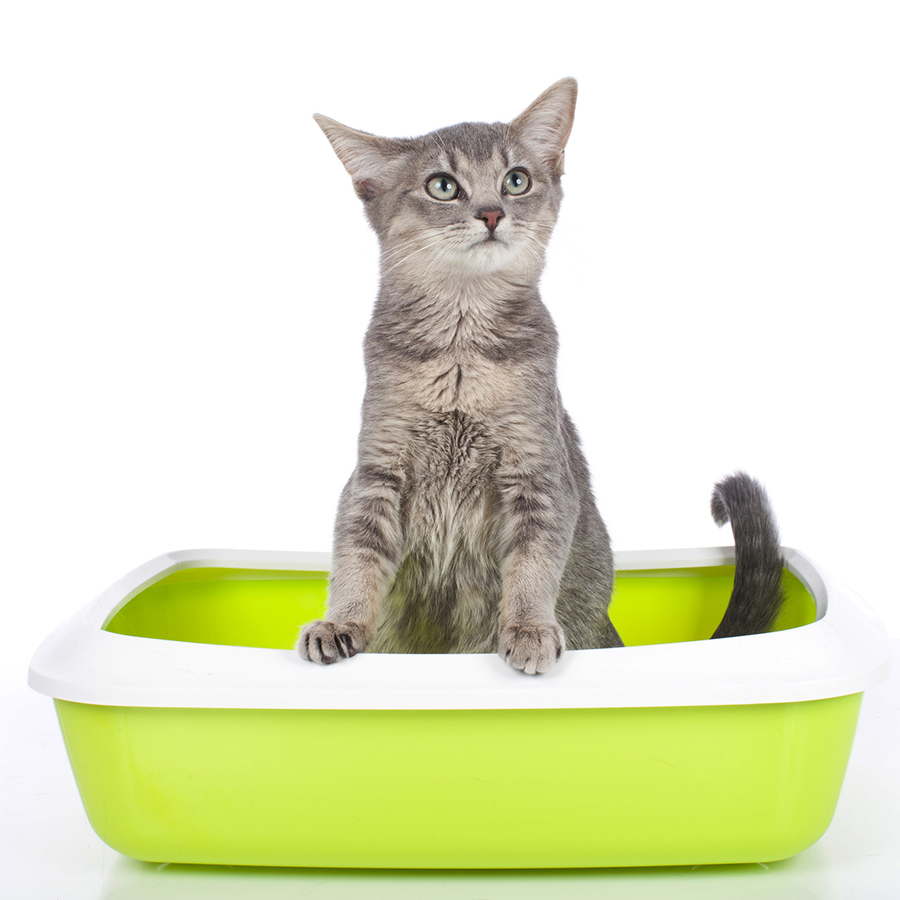Litter Box Care: How to Prevent or Treat Elimination Problems
Most cats prefer a fine-grained, unscented litter substrate (e.g., clumping litter).
Boxes should be scooped 1 or 2 times daily.
Clumping litter should be completely changed at least weekly and more often if more than one cat uses it. Clay litter should be changed a minimum of every other day (more frequently if multiple cats are using it).Wash litter box with warm, soapy water and dry well before adding new litter.
The ideal number of litter boxes is one per cat, plus one. Litter boxes should be placed in at least 2 different locations, and preferably more if a multiple cat household. Locations should be private and have easy access. Boxes should not be placed next to noisy appliances.
Prevent blocking litter box exit or entry of one cat by another. Have at least two ways for cats to enter and exit the box.
Never trap or corner a cat in its litter box to give it medication or perform other procedures that the cat may dislike.
Many cats prefer a litter depth of approximately 4 centimetres; however, preferences can vary.
Cats prefer litter boxes that are at least 1.5 times the length of their bodies.
Many commercial litter boxes are too small for larger cats.
Sweater storage boxes, cement mixing tubs, and small dog litter pans (for dogs up to 15 kgs) all make excellent cat litter boxes.
HELPFUL FACTS REGARDING URINATION AND DEFECATION:
The average cat urinates twice daily (+/- 2), and defecates once (and up to 3-4 times in outdoor cats) daily.
Some cats sniff and cover their eliminations; others don’t. Both are considered normal behaviour.
Eliminating outside the litter box often signals an underlying medical condition.
The earlier the problem is corrected, the better the chance for your cat to return to the litter box. Please call us to schedule an appointment.

Our Midland & Drovers Vet Hospitals are both accredited ISFM Cat Friendly Clinics.
The Cat Friendly Clinic programme is an internationally recognised assessment accreditation scheme which is open to any veterinary practice that cares for feline patients. There are certain requirements regarding design, equipment and facilities within the clinic, which must be met to achieve the standard. The clinic must also demonstrate that a high quality of care is provided to cats and that all staff understand cats and their needs in a clinic.
The benefit to the clinic is that not only will the scheme help to improve the clinical care of feline patients but may also increase the number of clients who are actively seeking a cat friendly clinic for their pet.




